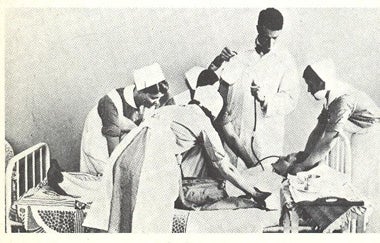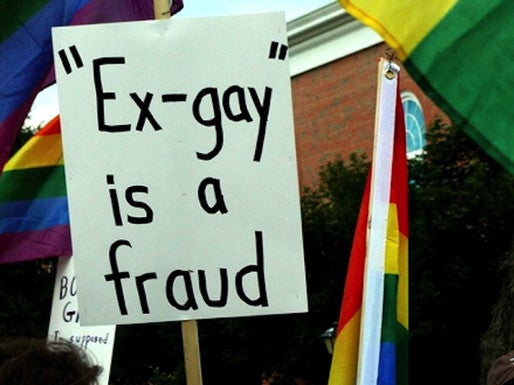Sexual orientation and gender identity are essential aspects of an individual’s identity. Sexual orientation is a person’s romantic, sexual, emotional, or spiritual attraction to others based on gender, and gender identity is the sense of “being” a specific gender such as man, woman, genderqueer, agender, etc. Unfortunately, certain orientations and identities are stigmatized by society because they do not conform to “traditional” societal norms, or the unwritten social rules that govern “acceptable” behavior. For example, having a gender identity that differs from one’s sex assigned at birth or having a non-heterosexual sexual orientation, differs from many social norms because it does not follow the traditionally cis-gendered and heterosexual narrative. Therefore, individuals in the Lesbian, Gay, Bisexual, Transgender, Queer (LGBTQ+) community can face stigmatization and a lack of acceptance.
According to some religious scriptures and the perpetuation of homophobic or transphobic ideas, the LGBTQ+ community is deemed by some to be unnatural, undesirable, or morally wrong.1 Identifying as a part of the LGBTQ+ community has been criminalized in some places, such as New York State, where there was a law that declared sodomy (anal or oral sex between people) a felony until 1950.2 Legislation against the LGBTQ+ community is based on the idea that sexual orientation and gender identity is a conscious choice. Some may consider their sexual orientation a choice, however, a large majority of human beings find their sexual inclinations to be inborn and innate, or something that cannot be changed despite conditioning.3 Despite the belief that sexual orientation and gender identity are innate, some communities use conversion therapy in an attempt to change sexual orientation and gender identity.

Table of Contents
What is Conversion Therapy?
Conversion therapy is any program or “treatment” aimed at altering an individual’s sexual orientation or gender identity in order to “promote heterosexuality or a gender expression/identity aligning with sex anatomy”.4 Attendees of conversion therapy are often coerced to participate by family members. These programs can have the option to attend single therapy sessions or month-long courses. Documentation of conversion therapy dates back to the 1890s and continues until present day.5 Leaders of conversion therapy range from health care professionals to religious figures.
Conversion Therapy Techniques
There are several techniques utilized in conversion therapy. The following is a list of conversion therapy methods.
- Talk Therapy is the most commonly used technique in conversion therapy today.6 It consists of one-on-one discussions between the conversion therapy leader and the attendee. These discussions may contain formal lectures on living in accordance with a heterosexual lifestyle.
- Group therapy uses an informal group to facilitate talk therapy and conversation among the participants. The group often talks about how their sexual orientation or gender identity has negatively impacted their lives.6
- Aversion Therapy combines classical conditioning with mildly painful techniques, such as a snap of a rubber band or nausea, to train an individual to associate non-heterosexual behavior or thoughts with negative feelings.6
- Stereotypical Masculine/Feminine Ideals – Individuals are taught how to be stereotypically masculine or feminine. This includes teaching people new hobbies, such as hunting to become more masculine, and sharing heterosexual dating tips. This technique is used for non-heterosexuals, transgender individuals, and gender-non-conforming individuals to make their gender expression match society’s view of their biological sex.6
- Hypnosis is a trance-like state in which the person being hypnotized has heightened focus and concentration. Hypnosis tries to “redirect non-heterosexual desire and arousal”.6
- Orgasmic Reconditioning is a form of operant conditioning in which the individual is trained to associate heterosexual porn with experiencing orgasm. Orgasmic reconditioning has little evidence proving its efficacy.6

- Electro-Convulsive Shock Therapy is an extreme measure that places the patient under anesthesia and administers an electric shock in order to produce a mild seizure. This technique is supposed to alter brain chemistry.6
- Castration is an extreme measure and is not currently used today.6 Castration, or the surgical removal of the genitals, was once seen as the ultimate cure to homosexuality.
Some of the methods employed in conversion therapy are more intense and invasive than others. Many of these techniques utilize shame, and sometimes religious guilt to deter attendees from non-heterosexual behavior.
Effectiveness of Conversion Therapy
There has been no evidence that efforts to change sexual orientation or gender identity are effective. The American Psychiatric Association explicitly states, “There is no published scientific evidence supporting the efficacy of reparative therapy as a treatment to change one’s sexual orientation.”7 In fact, people that have gone through conversion therapy often report increased depression, anxiety, self-loathing, homelessness, substance abuse, and suicidal ideation. Minors are especially vulnerable to these effects. Mainstream media and major medical and mental health organizations have rejected the practice of conversion therapy, especially since homosexuality was declassified as a mental illness in 1973.7

The Legality of Conversion Therapy
Conversion therapy legislation varies by country due to differing social and cultural norms. In some countries, conversion therapy is not well-documented, making it difficult to get accurate information about the efficacy of these practices. However, many organizations and legislators are working towards prohibiting the use of conversion therapy through legislation.1
Prevalence in the U.S.
According to a report by UCLA’s Williams Institute in 2019, it is estimated that in the U.S. alone, 698,000 LGBTQ+adults have received conversion therapy.5 About 350,000 of these adults received this treatment as minors.4 Currently, twelve states (California, Connecticut, Hawaii, Illinois, Maryland, Nevada, New Jersey, New Mexico, Oregon, Rhode Island, Vermont, and Washington) and the District of Columbia have passed legislation limiting the use of conversion therapy.5 Legislation in these states protects minors (people under the age of 18) from conversion therapy practiced by licensed medical professionals. Some states also ban conversion therapy that is in exchange for payment. The majority of states in the U.S. do not have bans on conversion therapy. Approximately 20,000 LGBTQ+ youth living in these states are expected to receive conversion therapy before the age of 18, unless further legislative action is taken. Some members of U.S. Congress have proposed legislation to end conversion therapy on a federal level.5
Prevalence in Asia
It is difficult to find accurate information regarding the prevalence of conversion therapy in Asia, as it has been “insufficiently documented”.8 The majority of Asian countries do not have regulations on conversion therapy. However, some states, such as Taiwan, have banned conversion therapy altogether. In China, there have been two legal cases addressing negative experiences in conversion therapy, one in 2014 in Beijing, and another in 2017 in the Zhumadian city. Both cases ended with a public apology and monetary compensation for the plaintiffs. These cases were widely publicized and received support from the LGBTQ+ community. Though these cases represent small victories, legislation banning conversion therapy is difficult to pass in Asia due to regional differences and inconsistencies in LGBTQ+ rights.8
The majority of the world does not ban the use of conversion therapy. Until further legislation is passed, conversion therapy will continue to have negative mental health effects on attendee’s lives.
Pop Culture References

Conversion therapy has been portrayed in the media to illustrate its harmful effects on those who already feel ostracized by society. In the 2018 film, Boy Erased, Jared Eamons, the son of a Baptist preacher, is outed as gay and pressured to go to conversion therapy by his family. At conversion therapy, he realizes that the leaders are not qualified, the program handbooks contain inaccurate information, and the leaders use invasive and humiliating techniques throughout group therapy. Boy Erased was based on a true story.
Conversion therapy was also referenced in a popular television mini-series, American Horror Story: Asylum. In this series, Sarah Paulson plays Lana Winters, a lesbian schoolteacher committed to an asylum for conversion therapy. She is forced to endure electroshock therapy as well as aversion therapy, during which she is given a nausea-inducing medication while being shown photos of nude women. These cultural references portrayed the harmful effects of conversion therapy on the patients’ mental health and overall quality of life.
Concluding Remarks
Conversion therapy is based on the false assumption that homosexuality is either a mental disorder or a conscious decision. Conversion therapy is often framed as “reparative therapy,” insinuating that individuals of the LGBTQ+community are broken and need to be repaired. This devalues the lives of those in the community. In reality, there is nothing broken, inherently wrong, or unnatural about these individuals. Conversion therapy attempts to repress healthy and normal expressions of sexuality and gender, leading to an increase in mental health issues in patients.7 Therefore, many organizations advocate for the end of conversion therapy worldwide. For further resources on LGBTQ+ support, feel free to check out our article here. For more information on the definitions of sexual orientations and gender identities, check out our article here.
References
- Substance Abuse and Mental Health Services Administration, Ending Conversion Therapy: Supporting and Affirming LGBTQ Youth. HHS Publication No. (SMA) 15-4928. Rockville, MD: Substance Abuse and Mental Health Services Administration, 2015.
- Chan, Sewell. “Marsha P. Johnson, a Transgender Pioneer and Activist.” The New York Times, The New York Times, 8 Mar. 2018.
- Baldwin, Janice and Baldwin, John. Topics in Sexuality: Advanced Studies McGraw-Hill Companies, Inc., 2012.
- American Academy of Child and Adolescent Psychiatry. “Fact Sheet- Conversion Therapy.” AACAP, Sept. 2019.
- Mallory, Christy, et al. “Update. Conversion Therapy and LGBT Youth.” Williams Institute, 16 June 2019.
- Homes, Jim. Commission on Sexual Orientation and Gender Identity Section of Individual Rights and Responsibilities Commission on Youth at Risk. AMERICAN BAR ASSOCIATION, 2015.
- Human Rights Campaign. “The Lies and Dangers of ‘Conversion Therapy.’” Human Rights Campaign, 2019.
- Bao, Hongwei, 2019. Conversion Therapy in China. In: CHIANG, HOWARD, ed., Global Encyclopedia of Lesbian, Gay, Bisexual, Transgender, and Queer (LGBTQ) History Farmington Hills, MI: Charles Scribner’s Sons. 418-422
Last Updated: 16 January 2020.
